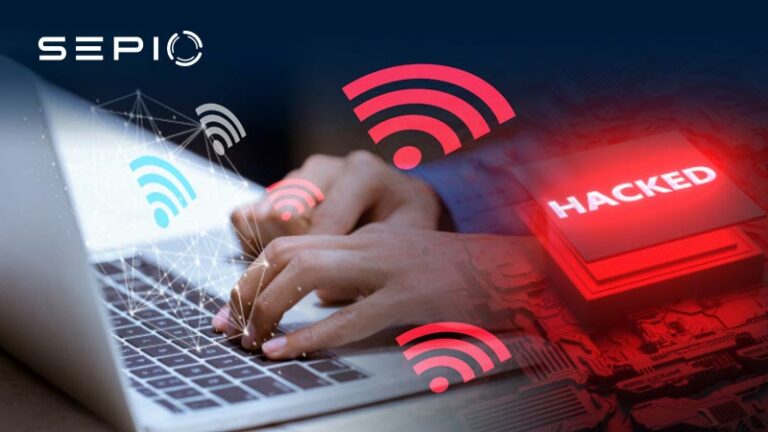What Is Operational Technology (OT) Visibility?
Operational Technology (OT) visibility is the ability to gain a clear, real-time understanding of all assets and activity within OT environments. It is essential for monitoring, managing, and securing the systems that support critical infrastructure—such as manufacturing, energy, transportation, and healthcare.
With comprehensive OT visibility, organizations can detect vulnerabilities, identify unauthorized devices, and respond swiftly to emerging threats. It enables proactive risk management and strengthens cyber resilience in environments where downtime is not an option.
Without OT visibility, critical infrastructure becomes vulnerable to intrusion, malware, and other cyber threats that could disrupt operations and compromise national security. A lack of visibility leaves gaps that attackers can exploit, increasing the risk of downtime, financial losses, and reputational damage. Implementing robust OT visibility measures is crucial for safeguarding the systems that form the backbone of modern industries.
Industry 4.0 and OT Visibility Challenges
The Fourth Industrial Revolution (Industry 4.0) has transformed industrial processes with cyber-physical systems (CPS) that automate the monitoring and control of OT assets through IT infrastructure. However, these advancements also introduce unique OT visibility challenges. Despite the benefits of CPS, the lack of comprehensive OT visibility increases data security risks and exposes critical systems to potential cyber threats.
Without adequate OT visibility, security management in OT networks becomes increasingly difficult. This lack of insight leaves systems vulnerable to hacking, phishing attempts, and other cyberattacks, ultimately compromising the safety and reliability of industrial operations. Addressing these visibility gaps is essential for securing OT environment in the age of Industry 4.0.
Connectivity and Security in Industrial Control Systems (ICS)
Cyber-physical systems are comprised of different digital tools that all share the common trait of connectivity. Through connectivity, physical systems (CPS) automate industrial processes, thus allowing for better allocation of resources and increased productivity. Industrial Control Systems (ICS), which include Supervisory Control and Data Acquisition (SCADA) systems and Distributed Control System (DCS), have been around for decades. Long before Industry 4.0 came into fruition. However, the development of physical systems (CPS) over the last few years saw the silo that Industrial Control Systems (ICS) once operated in begin to erode with the introduction of the Industrial Internet of Things (IIoT). Industrial Control Systems (ICS) are now connected to the “outside” world, increasing their exposure to threats like denial-of-service (DDoS) attacks and other security breaches.
A survey conducted by the SANS institute found that nearly 40% of devices in the Manufacturing Zone (Purdue levels 0, 1, 2, and 3) are connected to enterprise networks. This connectivity underscores the growing need for vulnerability management, authentication, and application security awareness in OT environment.
Operational Technology is Becoming More Connected
By leveraging connectivity, CPS have helped enterprises boost performance by enhancing efficiency and reducing downtime. This has led to better material use, enriched customer experiences, and increased returns on investment. However, as OT becomes more connected, it also becomes more vulnerable to hackers and attackers seeking to exploit blind spots in perimeter security. Blind spots in visibility allow compromised devices to evade detection, making robust intrusion-detection mechanisms and endpoint security essential.
The need for robust cybersecurity is imperative. Yet, visibility challenges remain a fundamental obstacle as blind spots allow vulnerabilities to go unaccounted for. Without comprehensive OT asset visibility, incident response teams struggle to safeguard critical infrastructure from ransomware attacks, data breaches and unauthorized access.
Operational Technology Visibility
Asset visibility is the foundation of effective asset management and is crucial for operational visibility cybersecurity. Countless devices get connected to Operational Technology networks and, maintaining reliability relies on competent asset management. Asset management, which is dependent on continuous visibility, provides insights into assets operating within the Operational Technology environment to assist decision making and ensure that security measures get appropriately applied.
However, the use of legacy technology means Operational Technology was not built with cybersecurity in mind. Thus, many visibility tools are not applicable to this domain. Network scanning solutions are incompatible with Operational Technology devices. As such, a study found that nearly 90% of enterprises have extremely limited OT visibility into their environment, leaving them exposed to security breaches and cyber attacks.
The importance of OT visibility for information-security extends beyond the OT environment. The adoption of IoT technologies means Operational Technology is exposed to the entire threat landscape. Hence, complete OT asset visibility and management of assets on the IT environment is just as critical. Nevertheless, visibility into the IT domain is also limited. With reports that 75% of enterprises are experiencing widening visibility gaps into both end-user devices and IoTs.
The Importance of OT Visibility for Cybersecurity
Asset Management
Asset management tools identify devices and provide an accurate and detailed asset inventory. However, enterprises suffer from a lack of physical layer visibility as existing security tools fail to cover this domain, thereby leaving the hardware level neglected. As such, the asset inventory is incomplete and, in turn, inaccurate. With extensive Operational Technology and IT supply chains, coupled with device heterogeneity, knowing the true identity of an asset is imperative and this requires physical layer visibility. Such data tells security teams more about a device than its network data; it provides them with electrical and physical specifications – simply knowing something exists is not enough. However, when a device is passive, enterprises even struggle with that.
Physical layer visibility detects the presence of devices that do not emit traffic and would otherwise go unnoticed. Moreover, Physical Layer information provides necessary insights into IIoTs as these non-802.1x compliant devices currently get authenticated by their MAC address, a method prone to spoofing. Complete OT visibility allows enterprises to assess each device’s risk posture and apply appropriate remediation measures.
Access Management
Asset visibility and asset management lay the groundwork for access management and policy enforcement. Effective cybersecurity depends on the enterprise’s ability to control user and device access to critical resources.
The interconnectedness of IT/OT environment means access management and policy enforcement are more necessary than ever. Maintaining OT visibility and reliability means heavily controlling access to such resources. Pre-defined policies determine, under what circumstances, an entity can access a resource. In other words, security policies address “who, what, where, when, how, or why”. Access management tools enforce these pre-defined policies by assessing a device and comparing it with the policy’s requirements. Naturally, this is where the importance of an accurate asset inventory comes into play. A flawed asset inventory, due to the Physical Layer blind spot, undermines policy enforcement and access management – a significant risk as all it takes is the exploitation of a single weak spot to jeopardize the entire enterprise.
Rogue Device Mitigation
Attackers exploit the physical layer blind spot using rogue devices. These hardware attack tools intentionally deceive existing security solutions (MiTM). By hiding their presence or spoofing their identity by using the same VID/PID/Class ID parameters as legitimate devices, thereby raising no alarms. In turn, access controls, such as network segmentation and Zero Trust – which are often relied on as robust defense mechanisms against the cybersecurity risks associated with Industry 4.0 – are futile in preventing these perilous devices from penetrating and moving laterally across the network. This is a significant risk to Operational Technology visibility as Industry 4.0 has expanded the attack surface considerably.
An interconnected environment that lacks effective access controls means any asset can act as an entry point. In which the first point of compromise gets used as a gateway to more sought-after resources. Hardware-based attackers simply need to attach a rogue device to the most accessible endpoint or network switch.
For enterprises that continue to maintain an air-gap, Operation Technology is still not immune to hardware-based attacks.
A study by ESET found that 100% of attacks compromising air-gapped networks used USB devices. This highlights the importance of robust security training and safeguards to mitigate such risks.
Sepio Solution for Operational Technology Visibility
OT visibility is a core component of critical infrastructure. It is highly vulnerable thanks its convergence with IT and the development of IIoT. To improve the security posture of cyber physical systems and maintain their continuous operability, enterprises need to get to the root cause of the problem. Visibility.
Sepio’s platform provides a panacea to the gap in device visibility by offering protection on the Physical Layer.
By going deeper than any other security solution, Sepio uses Physical Layer information to calculate a digital fingerprint of all IT, OT, IoT and IIoT assets – managed or unmanaged. No device goes undetected. Sepio accurately identifies devices and their associated risk posture based on multiple Physical Layer parameters and a unique machine learning algorithm to provide visibility like never before. Traffic monitoring can only tell you so much. Sepio’s ultimate visibility means unmanaged switches, passive taps and out-bound devices no longer fly under the radar. The solution continuously monitors all hardware assets to account for any anomalies. Issuing an alert when there are any chances to a device’s risk posture.
Physical Layer Visibility for Operational Technology Cybersecurity
Sepio asset risk management allows the system administrator to define granular hardware access policies for the system to enforce dependent on a device’s role or characteristics and its associated risk score, creating a Zero Trust Hardware Access approach. Sepio verifies and continuously validates the identity of all hardware assets to enhance policy enforcement. The solution integrates with other access control platforms through specific APIs to provide comprehensive access management.
Physical Layer visibility, augmented by the internal threat intelligence database, enables the immediate detection of rogue devices. Spoofed peripherals get identified for what they truly are. Not what they claim to be. Hidden network implants are instantly visible. When a rogue device gets detected, or a device breaches the pre-set rules, Sepio automatically blocks the unauthorized device through seamless third-party integration. The Rogue Device Mitigation feature of Sepio prevents unwanted and malicious assets from gaining access to the network and potentially causing damage to Operation Technology.
Ensure Complete OT Visibility and Secure Your Critical Infrastructure Today
Take control of your OT security with Sepio’s advanced Physical Layer visibility solution. Schedule a demo now to discover how we can help you identify and protect every asset in your OT environment, eliminating blind spots and strengthening your cybersecurity posture.
Read more about Operational Technology Visibility (pdf)





